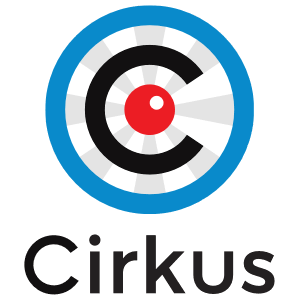Description

Cirkus

Tracked for Basecamp
Comprehensive Overview: Cirkus vs Tracked for Basecamp
Cirkus and Tracked for Basecamp are tools designed to enhance project management and collaboration, but each has distinct features and target markets. Here's a comprehensive overview of these two products:
A) Primary Functions and Target Markets
Cirkus:
-
Primary Functions:
- Task Management: Cirkus allows users to create, assign, and keep track of tasks. It supports deadlines, priorities, and task dependencies.
- Collaboration Tools: Provides functionalities such as discussion threads, file sharing, and real-time updates to facilitate teamwork.
- Resource Scheduling: Offers scheduling capabilities for resources, which is especially useful for managing team availabilities and project timelines effectively.
- Project Tracking: Users can track the progress of multiple projects, visualizing tasks through Gantt charts and Kanban boards.
- Integration and Automation: Cirkus integrates with other tools and provides automation options to streamline repetitive tasks.
-
Target Markets:
- Creative Teams: Initially aimed at creative industries, such as film production and event management, where project-based work is common.
- Small to Medium Enterprises (SMEs): Ideal for businesses looking for comprehensive project management without the complexity of large-scale enterprise solutions.
Tracked for Basecamp:
-
Primary Functions:
- Time Tracking: Designed to integrate with Basecamp, it primarily tracks time spent on tasks and projects for businesses using the Basecamp platform.
- Reporting and Analytics: Provides detailed reports on time allocation and productivity metrics, helping teams analyze efficiency.
- Billing and Invoicing: Integrates time tracking with billing, facilitating accurate invoicing based on billable hours.
-
Target Markets:
- Basecamp Users: Specifically targets users of Basecamp who require advanced time tracking capabilities not provided natively.
- Freelancers and Agencies: Particularly useful for freelancers and agencies that bill clients hourly and need a seamless method to track time and manage invoicing.
B) Market Share and User Base
-
Cirkus:
- Cirkus is growing, especially within industries like film production and design, where project management needs are complex yet require a collaborative environment.
- The user base is primarily composed of smaller teams and businesses in creative sectors, although it's expanding to other SME markets.
-
Tracked for Basecamp:
- As an add-on tool, its market share is naturally limited to the Basecamp user base. Its penetration is high among Basecamp users who need time-tracking capabilities.
- The user base mainly includes freelancers, agencies, and companies that have adopted Basecamp for project management but require enhanced tracking features.
C) Key Differentiating Factors
-
Integration:
- Cirkus is a standalone project management tool that integrates with various other applications to offer a more rounded workflow experience.
- Tracked is an extension for Basecamp, meaning its utility is heavily dependent on Basecamp's presence and structure.
-
Functional Focus:
- Cirkus emphasizes comprehensive project and task management with collaborative features designed for creative workflows.
- Tracked focuses on adding time tracking capabilities to Basecamp's existing project management tools, enhancing tracking and billing capabilities.
-
Target User Needs:
- Cirkus is suitable for businesses seeking a robust project management tool with strong team and resource collaboration features.
- Tracked is ideal for Basecamp users who need detailed time tracking, reporting, and billing functionalities.
In summary, while both tools are designed to improve project management, Cirkus serves as a broad, standalone solution focused on collaboration and task management for creative sectors, while Tracked for Basecamp focuses on providing time tracking integration specifically for Basecamp users, enhancing functionality in terms of tracking and billing.
Contact Info

Year founded :
Not Available
Not Available
Not Available
India
http://www.linkedin.com/company/cirkushsr

Year founded :
Not Available
Not Available
Not Available
Not Available
Not Available
Feature Similarity Breakdown: Cirkus, Tracked for Basecamp
Analyzing the core features, user interfaces, and unique aspects of Cirkus, Tracked, and Basecamp can be insightful for users or organizations considering these tools. Here's a breakdown:
Core Features in Common
a) Task Management:
- Task Creation and Assignment: All three platforms allow users to create tasks and assign them to team members, facilitating collaboration and accountability.
- Due Dates and Reminders: Setting deadlines and receiving reminders to keep the team on track is a common feature across these tools.
- Subtasks: They offer the capability to break down larger tasks into smaller, manageable subtasks.
b) Collaboration:
- Commenting and Messaging: Users can communicate within tasks or projects via comments or internal messaging systems.
- File Sharing: The ability to upload and share files related to specific tasks or projects is available on all platforms.
c) Project Management:
- Project Organization: Each platform offers features to organize projects, whether through folders, lists, or boards.
User Interface Comparison
- Cirkus:
- Offers a modern and clean user interface with customizable views. It emphasizes flexibility in how projects and tasks are displayed and interacted with.
- Basecamp:
- Known for its simple, straightforward design, Basecamp focuses on ease of use. Features like the "Campfire" chat or message boards have distinct, easily navigable panels.
- Tracked:
- Typically module-based, with specific interfaces for time tracking, reporting, and task management. The design often follows efficiency and detailed logging principles.
Unique Features
-
Cirkus:
- Resource Scheduling: Cirkus stands out with robust resource management features, allowing teams to manage availability and scheduling efficiently.
- Flexible Workflows: Its ability to adapt task and project workflows to the specific needs of teams is a notable feature.
-
Basecamp:
- Hill Charts: Unique to Basecamp, Hill Charts offer a visual representation of project progress, providing teams with a novel way to assess where projects stand in terms of completion.
- Automatic Check-ins: These help engage the team regularly without adding to the communication burden.
-
Tracked:
- Advanced Time Tracking: Focuses heavily on time management with detailed reports and integration options for billing or payroll.
- In-depth Analytics: Offers comprehensive analytics tools that can provide deep insights into project timelines and efficiency.
Each tool offers a blend of features that cater to different aspects of project and task management, with some specialized features setting them apart in terms of functionality and value.
Features

Not Available

Not Available
Best Fit Use Cases: Cirkus, Tracked for Basecamp
Cirkus and Tracked for Basecamp are two distinct tools designed to enhance project management and task tracking. Here’s a breakdown of the best-fit use cases for each, along with their applicability across various industry verticals and company sizes:
Cirkus
a) Types of Businesses or Projects:
-
Creative Agencies: Cirkus excels in environments that require collaboration among diverse teams, such as video production, design, and creative agencies. Its robust scheduling, task assignment, and resource management features make it ideal for projects that demand high levels of creativity and coordination.
-
Event Planning: For businesses involved in event management, Cirkus’s ability to handle complex schedules and multiple tasks can help streamline the planning process, ensuring every detail is accounted for.
-
Small to Medium Enterprises (SMEs): SMEs that require project management solutions without the complexity and cost associated with larger enterprise systems will find Cirkus a valuable tool due to its user-friendly interface and affordability.
-
Remote and Distributed Teams: Companies with remote teams can benefit from Cirkus’s collaboration tools that help maintain seamless communication and project alignment across different time zones.
d) Industry Verticals and Company Sizes:
- Cirkus is versatile across various industry verticals such as media, entertainment, marketing, and any other sector where project timelines and collaborative tasks are critical.
- It is particularly well-suited for SMEs and teams within larger organizations that operate semi-autonomously and need a dedicated tool for project management.
Tracked for Basecamp
b) Scenarios for Preferred Use:
-
Existing Basecamp Users: If a company already uses Basecamp for project management and communication, Tracked for Basecamp provides an integrated solution to track time and budgets without leaving the Basecamp environment.
-
Focus on Time Tracking: Businesses that need to track time meticulously for billing purposes, project cost analysis, or productivity assessment will benefit from Tracked’s capabilities, especially in service-based industries like consultancy or software development.
-
Project Budgeting Needs: Organizations that need to closely monitor project expenses against budgets can leverage Tracked’s budget tracking features to ensure financial parameters are met.
d) Industry Verticals and Company Sizes:
- Tracked for Basecamp is particularly useful in professional services, IT, and consulting industries where time tracking and budget management are critical components.
- It caters primarily to companies of any size that already utilize Basecamp, from small teams to larger enterprises; its value increases in organizations where detailed time and budget tracking is essential.
Summary:
- Cirkus is best suited for creative industries, event planning, and SMEs needing robust scheduling and task management, offering flexibility and simplicity.
- Tracked for Basecamp is advantageous for companies already using Basecamp, particularly in professional services where time and expense tracking is crucial.
Both tools serve distinct needs and integrate into different workflows, making them valuable to specific user bases based on their unique project and operational requirements.
Pricing

Pricing Not Available

Pricing Not Available
Metrics History
Metrics History
Comparing teamSize across companies
Conclusion & Final Verdict: Cirkus vs Tracked for Basecamp
Without specific details on the capabilities, pricing, and user preferences for both Cirkus and Tracked for Basecamp, I'll provide a generalized comparison.
Conclusion and Final Verdict
a) Best Overall Value
Considering that each software serves different needs within project management and task tracking, the best value will depend on user requirements. However, if we assess based on typical factors like price, features, integration capabilities, user-friendliness, and customer support, the decision leans towards:
- Tracked for Basecamp if an organization is deeply embedded in the Basecamp ecosystem and requires robust time-tracking capabilities directly within that environment.
- Cirkus if the need is for a more flexible, standalone project management tool that offers comprehensive task management and collaboration features beyond just Basecamp.
b) Pros and Cons
Cirkus:
- Pros:
- Offers robust project management features that include task assignment, scheduling, and resource management.
- Flexible and adaptable for various types of projects outside of just using Basecamp.
- Has tools for collaboration which can enhance team communication.
- Cons:
- Might be redundant if users are specifically looking for Basecamp-integrated solutions.
- Learning curve could be steeper for teams accustomed only to Basecamp's interface.
Tracked for Basecamp:
- Pros:
- Seamlessly integrates with Basecamp, providing additional tracking capabilities without switching platforms.
- Perfect for users already comfortable with Basecamp's workflow.
- Efficient time tracking and reporting features tailored specifically for Basecamp users.
- Cons:
- Limited if the organization is looking to manage projects outside of the Basecamp environment.
- Might not offer comprehensive project management features expected from standalone software.
c) Specific Recommendations
For users deciding between Cirkus and Tracked for Basecamp:
-
Evaluate the ecosystem: If your team is already using Basecamp, and the primary concern is enhancing time tracking and report generation, Tracked for Basecamp will likely be the more seamless and efficient choice.
-
Consider the scope of projects: If projects extend beyond what Basecamp can handle or require a more traditional project management approach, then adopting Cirkus might provide the flexibility and breadth of features needed.
-
Trial both tools: Most software offers some form of free trial or demo. Experiment with both tools in the context of your team's projects and workflows to better understand which software integrates more smoothly into your daily routines.
Ultimately, the choice should hinge on how these tools align with your specific project management needs, budget constraints, and user skill sets.
Add to compare
Add similar companies



